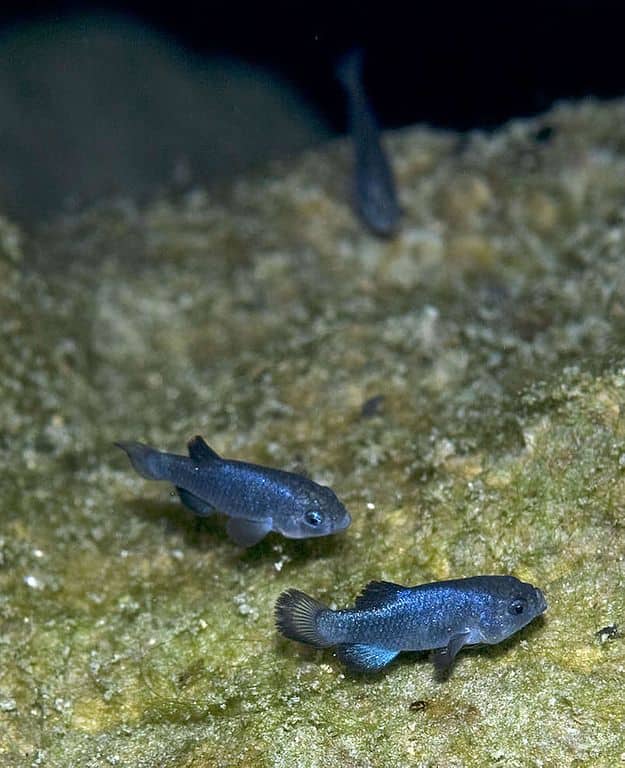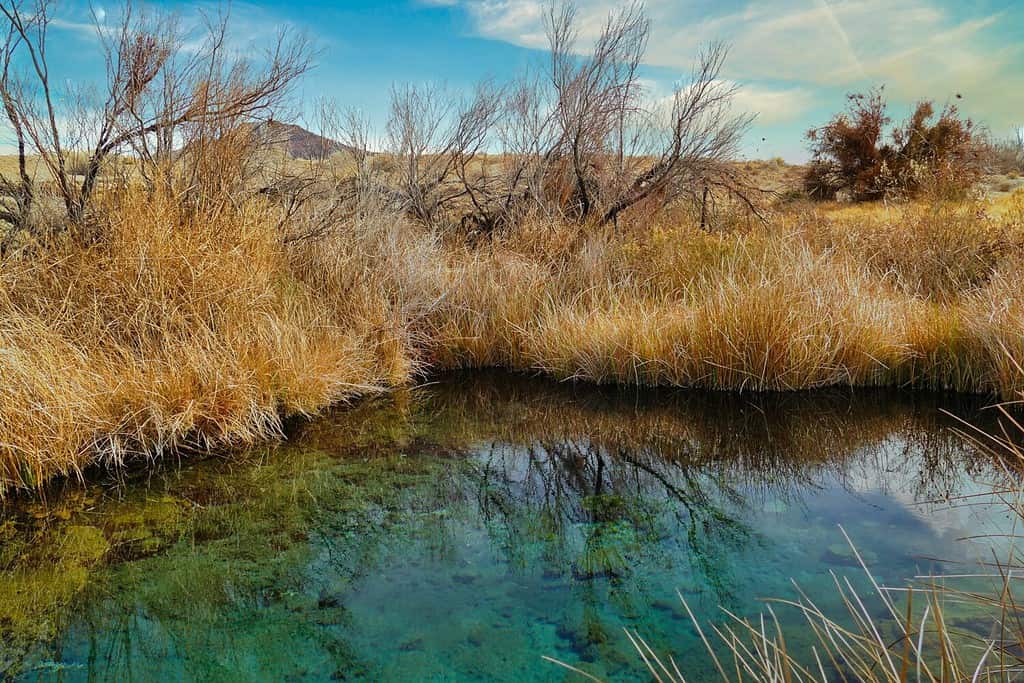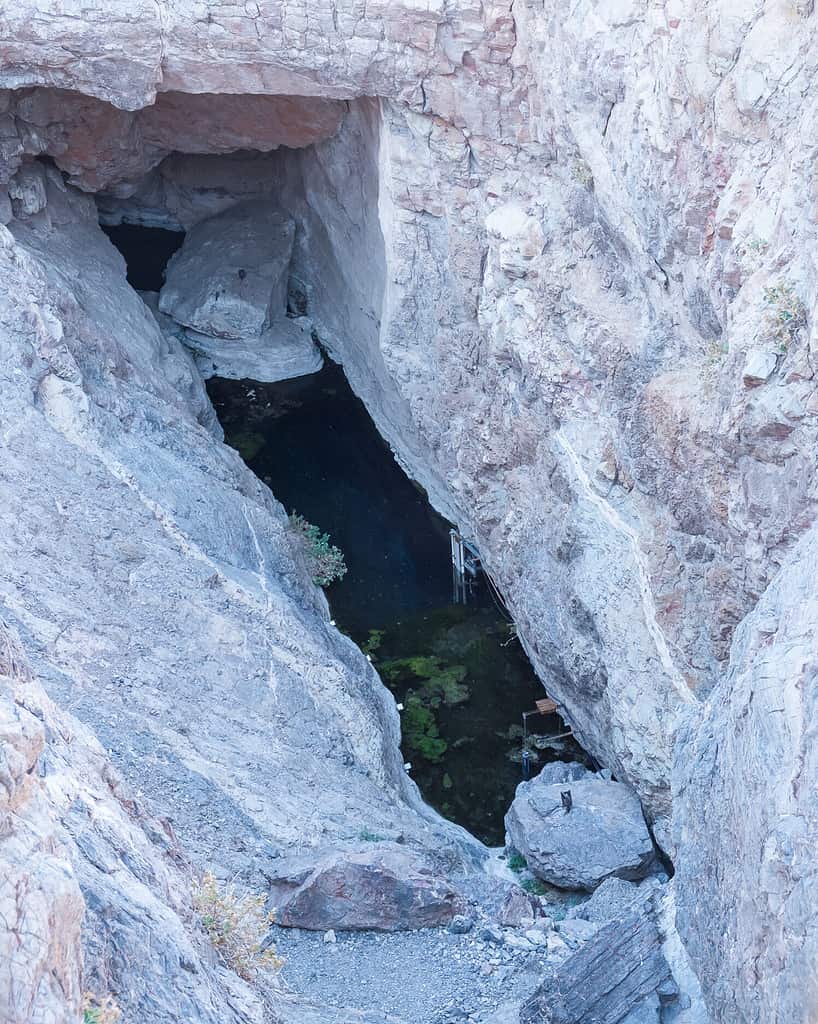If someone asked you to guess the location of the rarest fish in U.S. waters, a cave in Nevada likely wouldn’t come to mind. But an isolated Nevada cave is exactly where a critically endangered, extremely rare fish species calls home.
Read on to learn all about this unique and endangered cavefish.
What Is the Rarest Fish in U.S. Waters?
The title of rarest fish in U.S. waters goes to the Devil’s Hole pupfish (Cyprinodon diabolis), a fittingly strange name for such an elusive critter. The Devil’s Hole pupfish is a member of the Cyprinodontidae, or pupfish, family. This family of ray-finned fish is separated into ten genera and exists in unique aquatic habitats throughout the southwestern U.S.
The Devil’s Hole pupfish lives in perhaps the strangest and most isolated of these areas- a shallow aquatic shelf and the upper 30 feet of water within a deep limestone cave. Their extremely restricted cavernous home is the smallest range of any vertebrate species in the world. This limestone cave, called Devil’s Hole, exists within the Ash Meadow National Wildlife Refuge in Nevada’s Amargosa Desert.

The Devil’s Hole pupfish populated is entirely isolated to one aquatic cave in Nevada- Devil’s Hole.
©Olin Feuerbacher / USFWS / public domain – License
Devil’s Pupfish Morphology
Cyprinodon diabolis is the smallest of pupfish in the Cyprinodon genus, with a maximum length of 1.2 inches and a weight range of 4-6 grams. This species has 12 dorsal (top) fin rays, 17 pectoral (side) fin rays, and 28 caudal (tail) fin rays.
Adult males feature a silver-blue body color with a black terminal strip on the tail fin. Juveniles and females are typically yellow-brown to light brown with yellow along the margins of their pectoral and caudal fins.
About the Ash Meadow National Wildlife Refuge and Devil’s Hole
The Ash Meadow National Wildlife Refuge is an incredibly unique desert ecosystem. Surrounded by miles of arid desert, crystal clear streams and springs dot the landscape, fed by 12 major spring systems and the underground Amargosa River. This stunning area is an oasis for 26 species of native plant and animal species that exist nowhere else on Earth. The 13,320-acre wildlife refuge is home to more species found in only one location than anywhere else in the U.S.

The Ash Meadow National Wildlife Refuge is home to 26 unique, native plant and animal species found nowhere else on Earth, including the Devil’s Hole pupfish.
©Hans Wismeijer/Shutterstock.com
Devil’s Hole
Within this amazing ecosystem exists Devil’s Hole, the 500-foot-deep limestone aquatic cavern home to the endangered Devil’s Hole pupfish. The cave opening is about 70 feet long and 35 feet wide. About 50 feet from the opening of the cave sits the surface of the water. The pupfish, however, don’t swim the entire depth of these cave waters. Instead, they exist only primarily only within a shallow water-filled limestone shelf along the walls of the cave.

The opening of Devil’s Hole leads to a 500-foot-deep aquatic cave where the critically endangered Devil’s Hole pupfish resides.
©Dominic Gentilcore PhD/Shutterstock.com
The Rarest Fish in U.S. Waters: Devil’s Hole Pupfish Population
This incredibly rare species has been isolated from other pupfish populations for about 10,000-20,000 years, and since 1967, they’ve been listed as critically endangered. The Devil’s Hole pupfish was placed on the first U.S. list of endangered species following the passing of the Endangered Species Preservation Act.
In 2013, their population plummeted to a record low of only 35 live, wild individuals. Due to increased conservation and population monitoring efforts, their recorded numbers have increased to 263 in 2022. The 2022 population count is the highest recorded in 19 years. Before the 1990s, the Devil’s Hole pupfish population typically reached 400-500 individuals. Scientists are still determining the causes of the sharp decline over the past decades and the recent increase in the population.
The Rarest Fish in U.S. Waters: Diet and Life Cycle of the Devil’s Hole Pupfish

The Devil’s Hole pupfish thrives in a strangely beautiful cavernous habitat that would be hostile to most fish species.
©Olin Feuerbacher / USFWS / Public Domain – License
The Devil’s Hole pupfish have an omnivorous diet, primarily feeding on algae growing on the cave’s limestone walls, as well as tiny invertebrates such as amphipods. The main source of nutrition in their diet varies by the season. In the winter and spring, they feed primarily on photosynthesizing algae called diatoms. In the summer and fall, Spirogyra algae are their main food source.
Breeding occurs year-round since its habitat is relatively uniform throughout the seasons. In the spring and fall, breeding levels tend to spike. Females lay only a few eggs at a time, and the entire lifespan of this endangered fish is 6-12 months, contributing to the difficulty of keeping the population stable.
Geothermal heat warms the water of the cave, keeping the temperature at a constant 92 degrees Fahrenheit. The salinity levels also remain consistently high throughout the year. While this climate would be hostile to the majority of fish species, the incredibly unique Devil’s Hole pupfish calls this strange, beautiful cavernous habitat its only home.
The photo featured at the top of this post is © Ken Lund / CC BY-SA 2.0 – License / Original
Thank you for reading! Have some feedback for us? Contact the AZ Animals editorial team.







